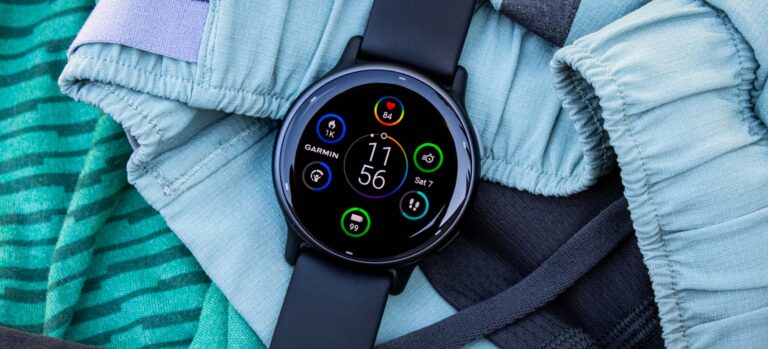Among the various smartwatch ecosystems currently available, Garmin arguably offers the most complete and balanced lineup. Although the brand produces a variety of models dedicated to specific sports and professional uses, Garmin also produces a number of general-purpose smartwatches capable of tracking a wide range of activities, aiming to be versatile timekeeping companions designed for modern everyday life. Among the latest new products released by the brand in 2023 is the Garmin Vivoactive 5, a very good value smartwatch at the entry level of the catalog, making it a very attractive option for those looking for a versatile sports watch with comprehensive health and fitness tracking capabilities.
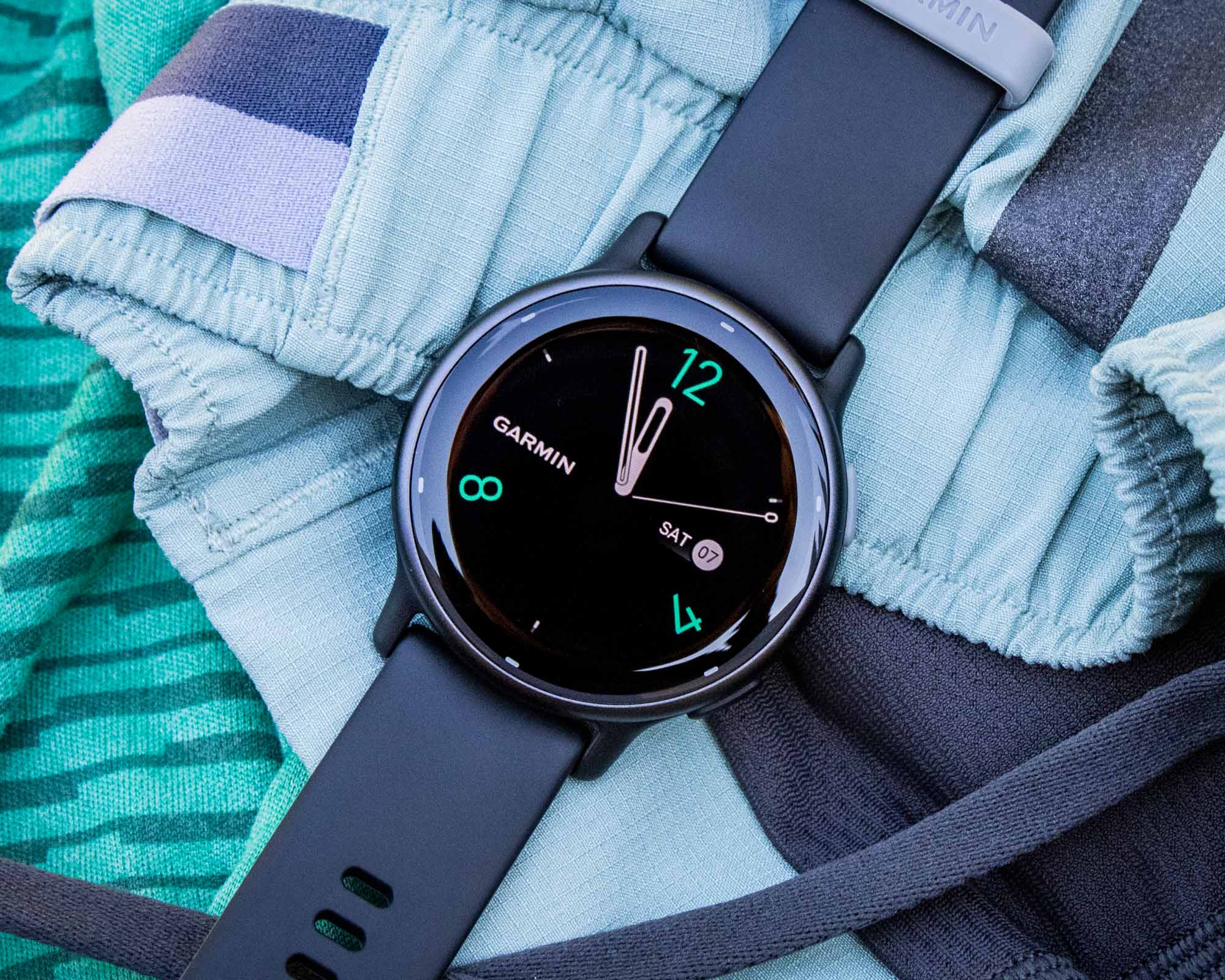
I am a long-time Garmin user, but the Vivoactive 5 is my first experience with the brand’s latest offering. My Garmin is an older Forerunner 35 (now discontinued) that has served me faithfully for years and is still going strong, despite being pretty abused. However, I have to admit that while my Garmin Forerunner 35 has all the features I really need, it is downright primitive compared to the new Vivoactive 5. Garmin has come a long way in smartwatches over the last few years, offering vastly expanded functionality and a completely different interface with a touch screen and full-color 1.2-inch AMOLED display, yet I personally find the Garmin Vivoactive 5 incredibly easy and intuitive to use, both during setup and in day-to-day operation.
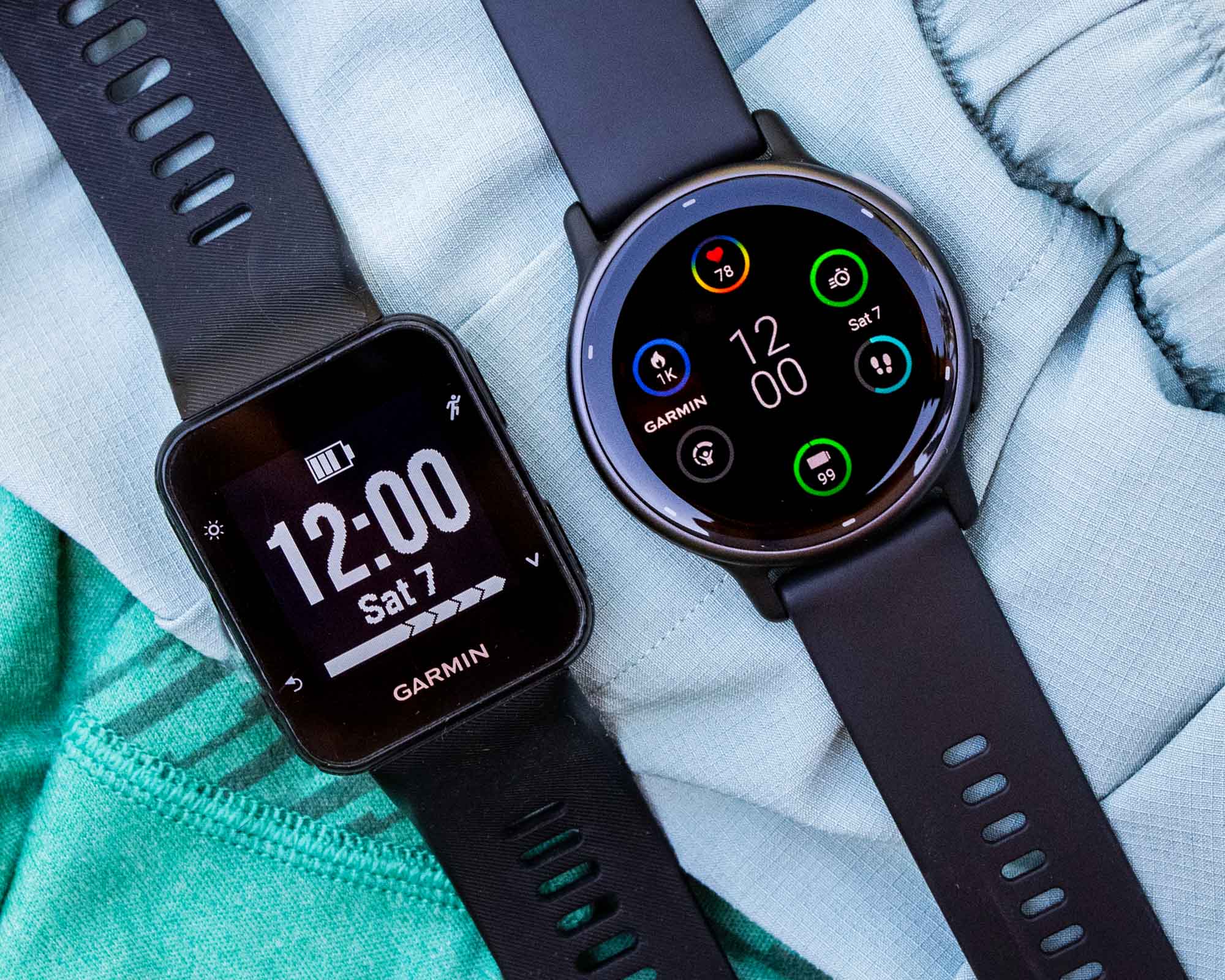
The materials and construction of the Garmin Vivoactive 5 are pretty much what you’d expect from the entry-level price range, but the same could be said about my old Forerunner 35, which has proven incredibly durable over time. The round case is made from fiber-reinforced polymer, while the bezel is made from anodized aluminum. It’s 42.2mm in diameter and 11.1mm thick, but if you take into account the sensor that protrudes from the center of the caseback, the overall height of the watch is about 12.5mm at its thickest point. On the right side of the case are two physical buttons, while a Gorilla Glass 3 touchscreen complements the rest of the watch’s controls. Meanwhile, the back of the case features the essential multifunction sensor and charger contacts, and the Vivoactive 5 is water-resistant to 50 meters. Considering that the watch also includes a mode dedicated to tracking swim workouts, that will be more than enough for most people.
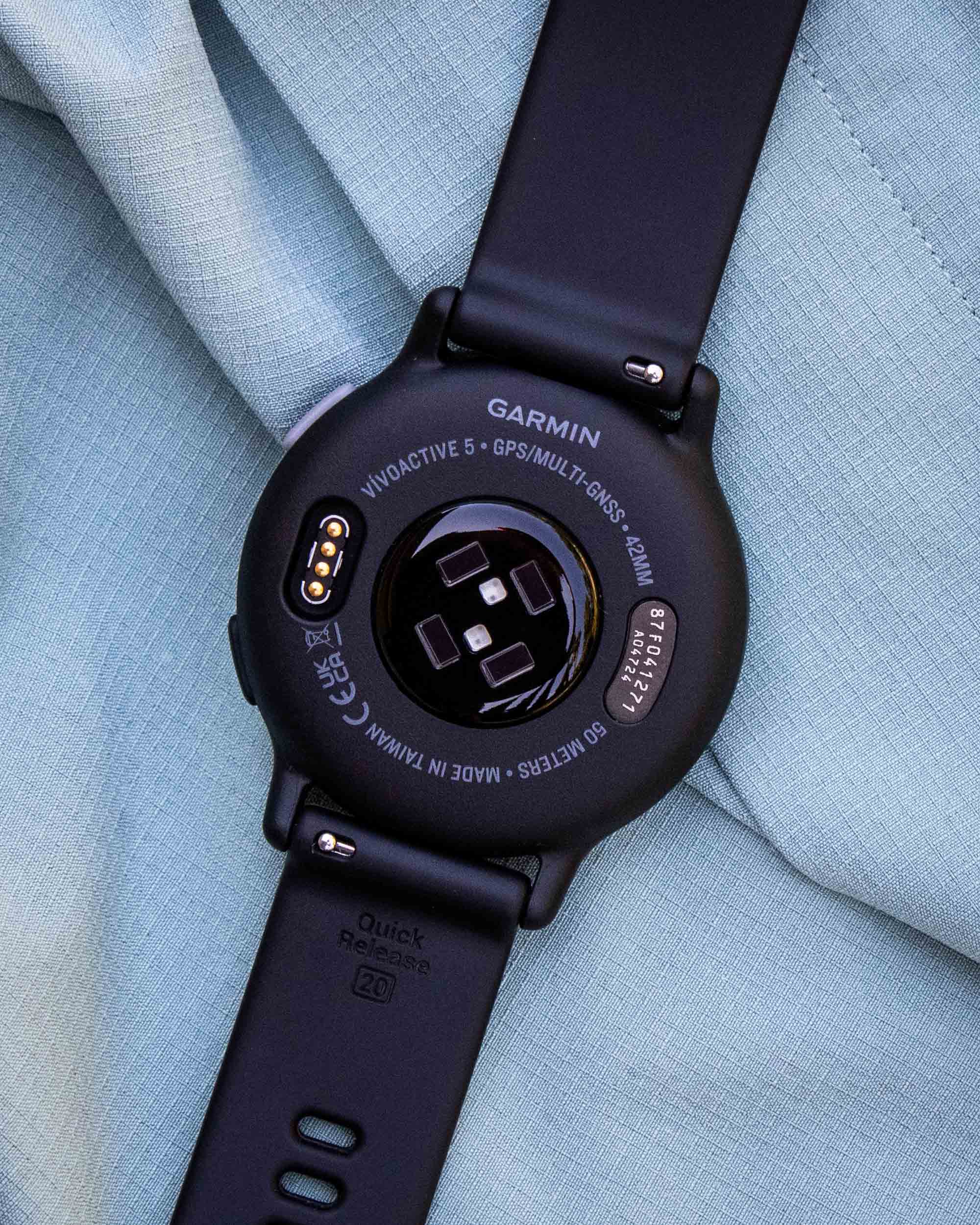
Another nice feature about the Garmin Vivoactive 5’s design is that it has traditional lugs on the case and uses a standard 20mm strap. While you should use a two-piece strap (or other style that allows the caseback sensor to make contact with your wrist), nearly any 20mm strap will work with the Vivoactive 5. That said, I think the included rubber strap is ultimately very comfortable and a perfectly practical option. The silicone strap with a polymer tan-style buckle connects to the lugs with built-in quick-release spring bars, making it easy to change straps without tools. One nice aesthetic detail is that the strap keepers are presented in a contrasting color. Considering that my old Forerunner 35 still uses the original strap (although I did replace the keeper once), I expect the silicone strap that comes with the Garmin Vivoactive 5 to last quite a while.
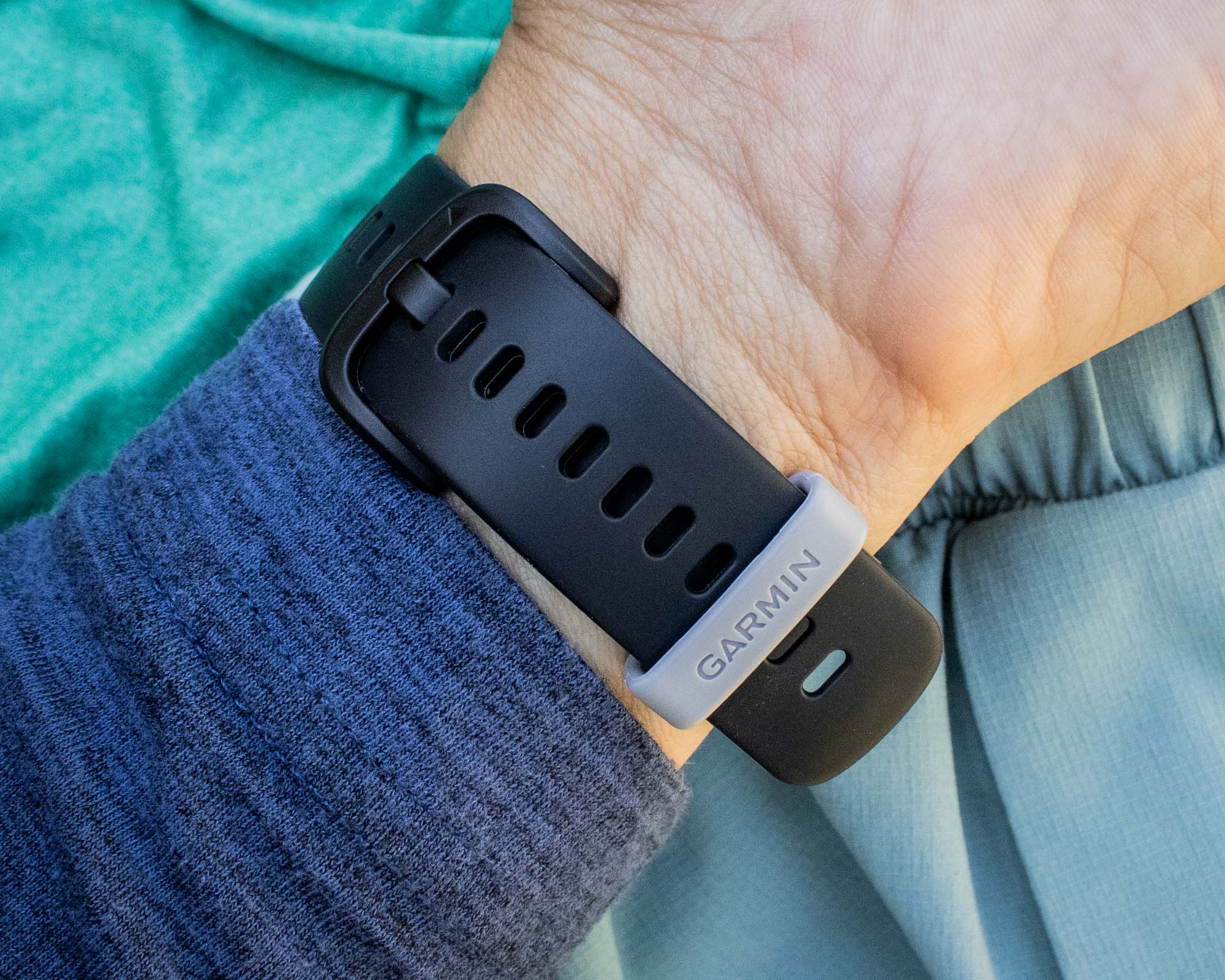
In terms of features, the Garmin Vivoactive 5 may be one of the best value models among the brand’s current wearable devices. It lacks some of the features found in more premium models, but ultimately has a very good feature-to-cost ratio. One of the most notable features missing from the Vivoactive 5 is the ability to make calls and reply to texts directly from the device itself, although you can view text messages and answer calls without touching your smartphone. Additionally, the Garmin Vivoactive 5 also lacks a barometric altimeter, so elevation data can only come from a GPS connection and you can’t passively count the number of stairs you climb each day. Garmin offers many other models with these features, but they had to leave something out when creating the Vivoactive 5, but the watch still performs most of the functions most people need on a daily basis.

Because the Garmin Vivoactive 5 is designed primarily as a multi-purpose health and fitness tool, it also lacks some of the sports-specific features found in other models in the brand’s current catalog. Garmin makes a variety of smartwatches specialized for different sports, environments, and specialized uses, but the Vivoactive 5 isn’t one of those products, so you won’t get the dive computer features of the Descent series or the golf-specific features of the Approach line. However, it does have a fairly extensive set of built-in modes that can track most activities people enjoy on a daily basis. Like something like the Apple Watch, the Garmin Vivoactive 5 is a device that can perform a variety of functions, and its main strength lies in its everyday versatility, rather than being the best choice for any particular task.
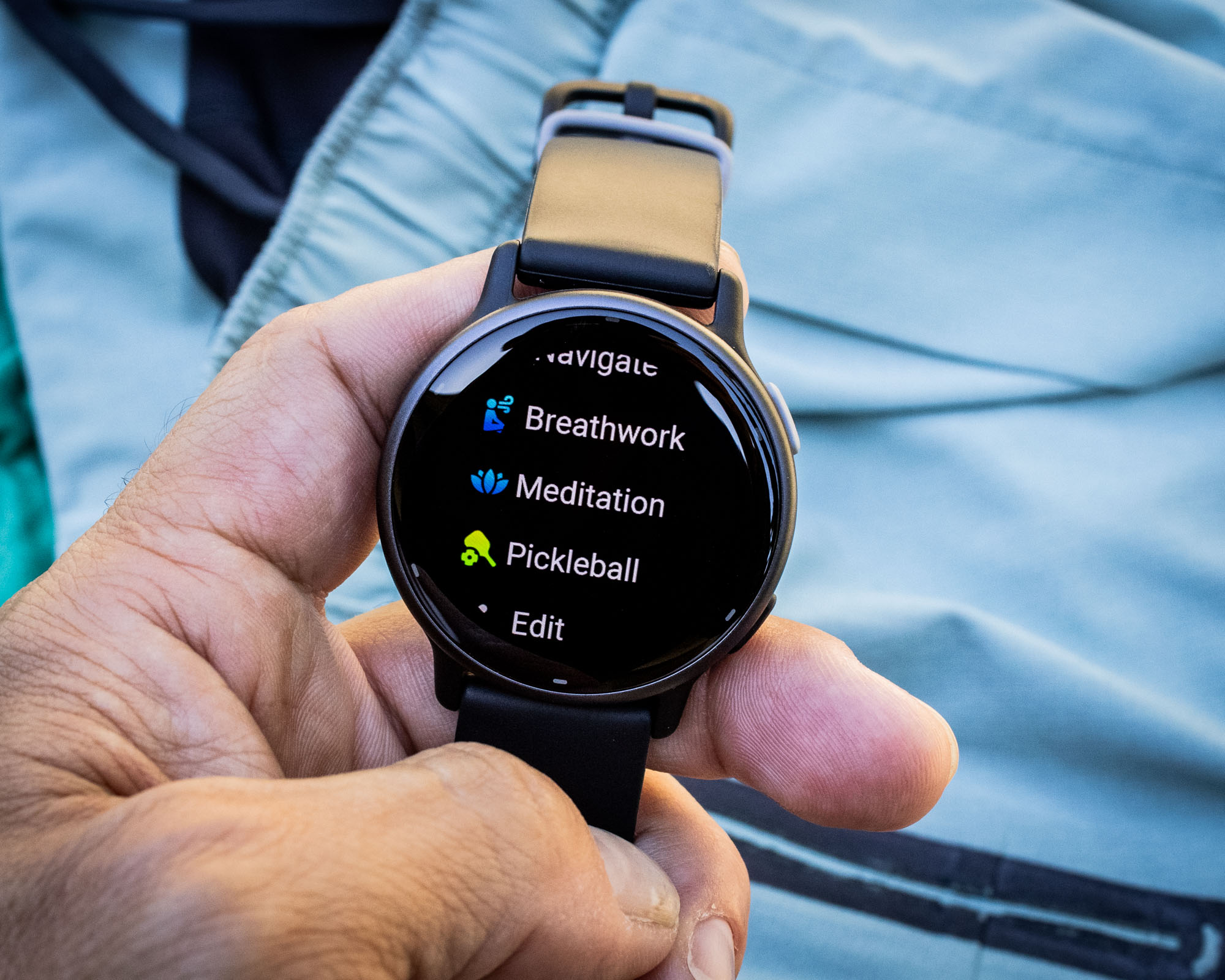
The Garmin Vivoactive 5 includes a fairly comprehensive list of built-in apps designed to track everything from running and biking to breathing exercises and meditation, but also has modes dedicated to lesser-known activities like paddle boarding, disc golf, pickleball, and even e-sports gaming. Additionally, in addition to a wide range of sports tracking capabilities, the Garmin Vivoactive 5 offers a host of advanced health and fitness features, including a built-in sleep coach, stress management tools, recovery time tracking, and physical energy monitoring. In addition to the integrated health and activity tracking features, the Garmin Vivoactive 5 also includes all the standard features you’d expect from a modern, well-rounded smartwatch, including alarms, timers, the ability to make contactless payments, on-device music integration, smartphone syncing for calls/texts, and the ability to customize a variety of virtual watch faces directly from the device itself.
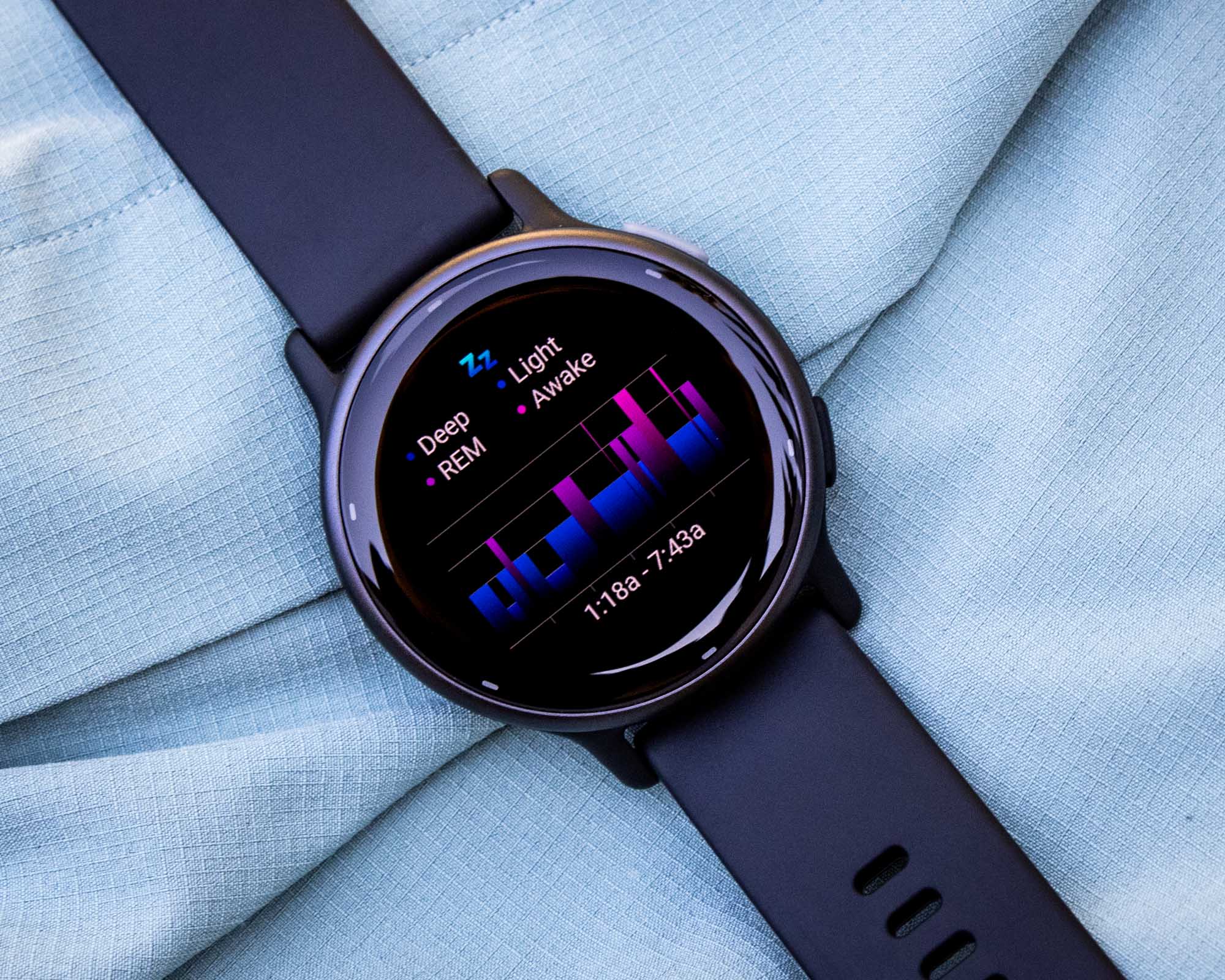
Aside from changing the look of the watch, the various virtual faces available for the Garmin Vivoactive 5 each offer slightly different functionality. Some are primarily for those who use the smartwatch for health and fitness tracking, focusing on metrics such as heart rate and daily steps, while other virtual faces feature a digital compass or act as a head-up display showing information about the weather and sunrise/sunset times. There’s even one digital watch face dedicated to regattas. On top of that, many of the virtual faces can be customized to show different colors and informational indicators, making it relatively easy to configure a display that suits your personal needs and aesthetic preferences.
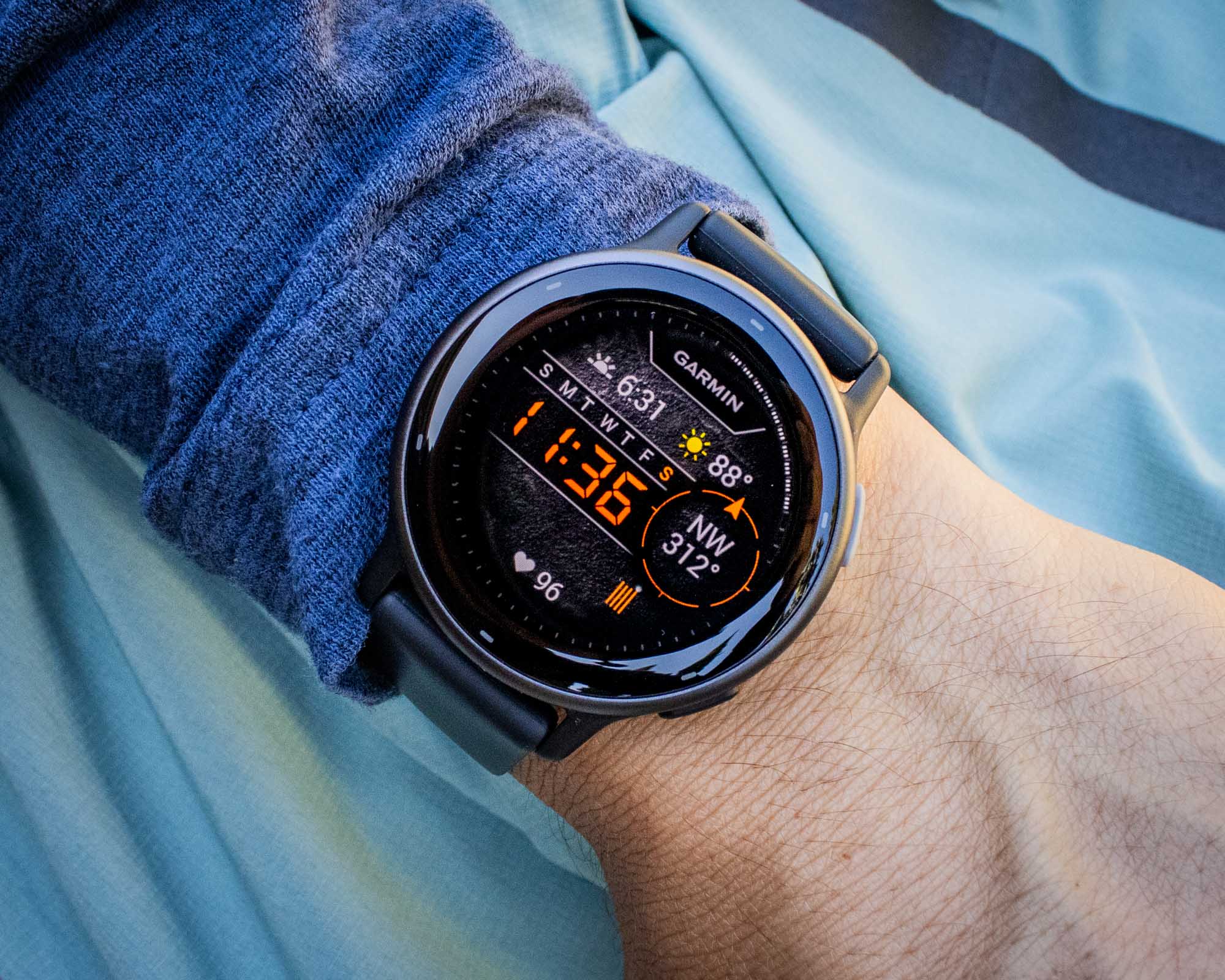
In terms of battery life, the Garmin Vivoactive 5 can last up to 11 days in standard smartwatch mode and up to 5 days when using the always-on display. However, the watch’s battery saver settings can extend the autonomy to 3 weeks. How you use the Garmin has a direct impact on battery life, and GPS-based features such as tracking outdoor runs require more power than tracking a similar run on a treadmill. Even if you wear the watch 24 hours a day and have the display set to always on, I was typically charging my Garmin Vivoactive 5 once every 3 days, but tracking long hikes using GPS drains the battery much faster than just tracking a run on a treadmill using the watch’s built-in sensors. Battery life is a category where Garmin excels compared to many other brands, with some models offering longer autonomy, but the Vivoactive 5 offers significantly better battery life than the various Apple Watch models currently available.

While the device itself can display quite a bit of information about the various health and activity tracking metrics it records, its capabilities are greatly expanded when you use the Garmin Vivoactive 5 with the Garmin Connect smartphone app. Within the app, you get deeper insights into your workouts and activities, as well as a more comprehensive analysis of the health metrics the device measures throughout the day. For GPS-tracked activities, you can view a map of all your moves within the Garmin Connect app. The most practical use of this feature is to see a map of where you went for a hike or run, but the built-in GPS is accurate enough to be useful for many other sports as well. I wore the Garmin Vivoactive 5 to play a few friendly games of pickleball, and using the dedicated pickleball tracking feature, the built-in GPS was accurate enough that I could distinguish between different matches just by looking at a map of my moves.
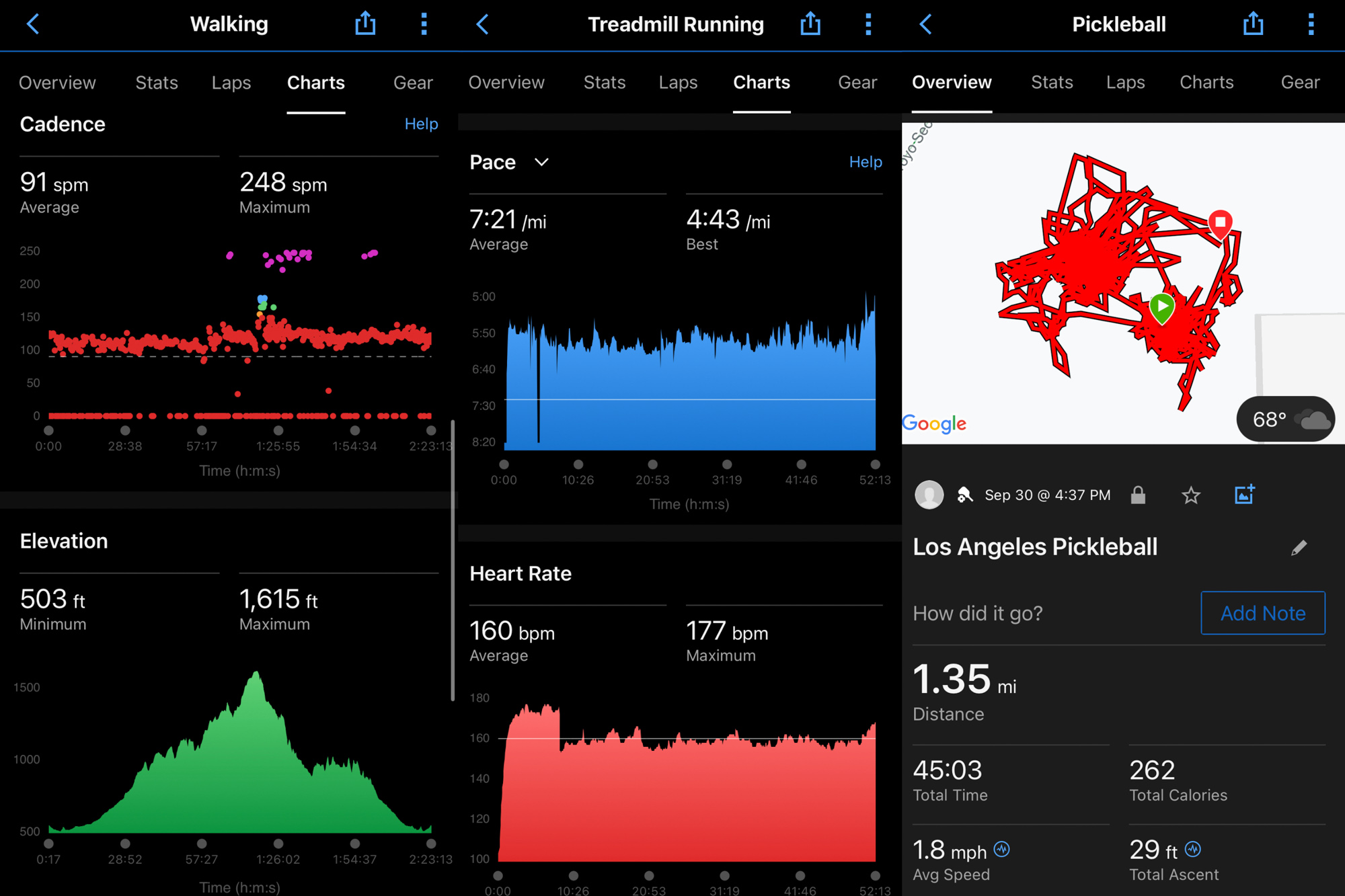
I wore the Garmin Vivoactive 5 24 hours a day for over a week to get a feel for its health coaching features and see what it would be like to wear it as my only watch. By the end of the first week, I was ultimately pleasantly surprised by its ability to do everything I needed it to do. The GPS-tracked distance is naturally pretty accurate, but I was also impressed with how quickly the device could adapt to my stride length. After calibrating the Vivoactive 5 during a 7-mile treadmill run, the built-in sensor was pretty accurate thereafter, and on subsequent treadmill runs, the total difference between the device and the treadmill distance was just 0.02 miles during another 7-mile run. Overall, the Garmin Vivoactive 5 is not only a capable overall health and fitness tracker, but also a great everyday smartwatch, and I think most people will be more than satisfied with its range of features.
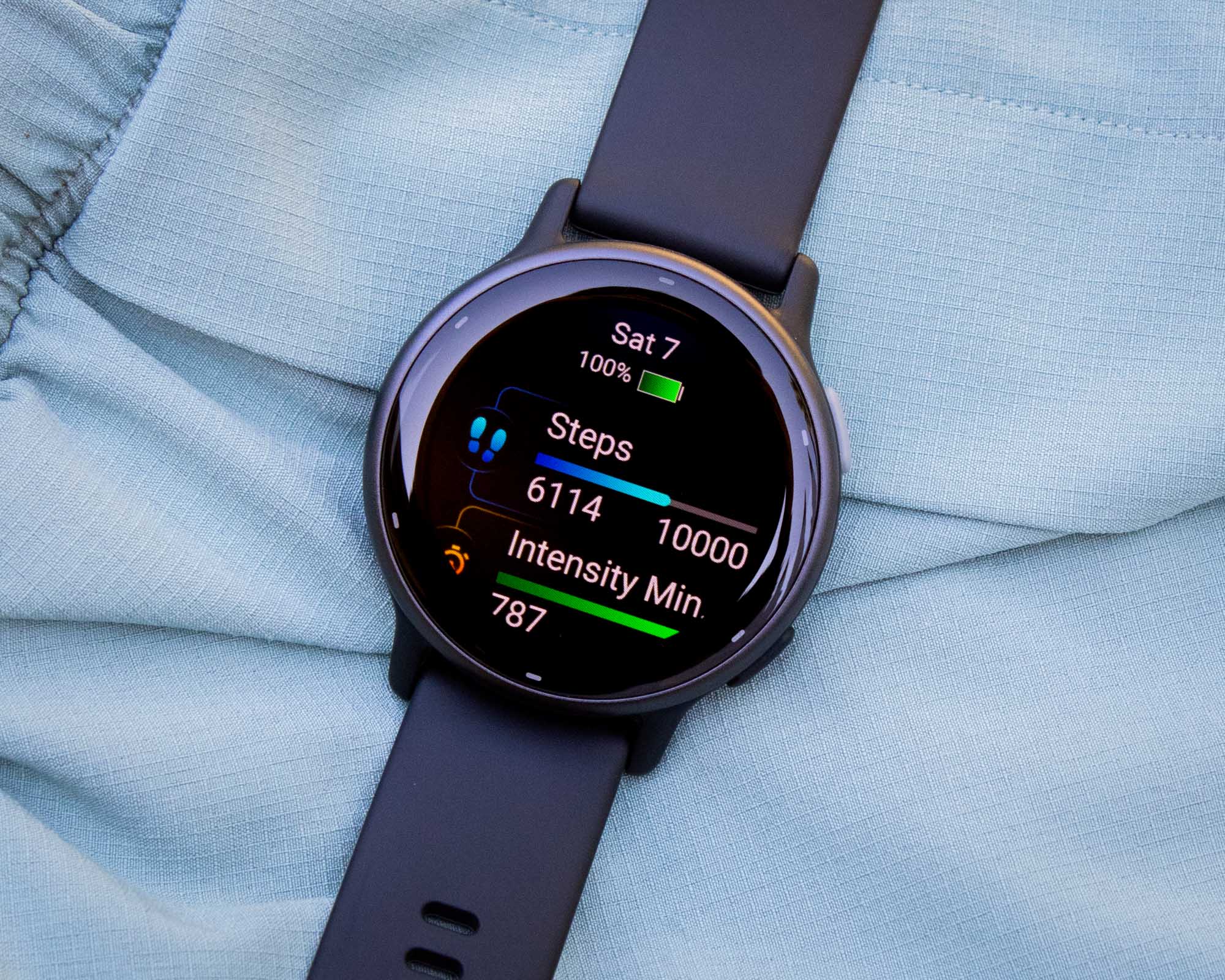
I’ve been wearing the Garmin Vivoactive 5 continuously to get a feel for its health and fitness tracking capabilities, but this isn’t the usual way I usually wear my Garmin in my daily life. I wear my Garmin almost every day, but usually only when I need the smartwatch features. For example, I wear my Garmin as a dedicated sports watch to track my daily runs and workouts. I also wear it to bed for sleep tracking and to wake up with a vibrating alarm in the morning. However, for the rest of the day, I often wear a different watch on my wrist, and it’s important to remember that there are many ways to use the Garmin Vivoactive 5 without it being your primary watch.
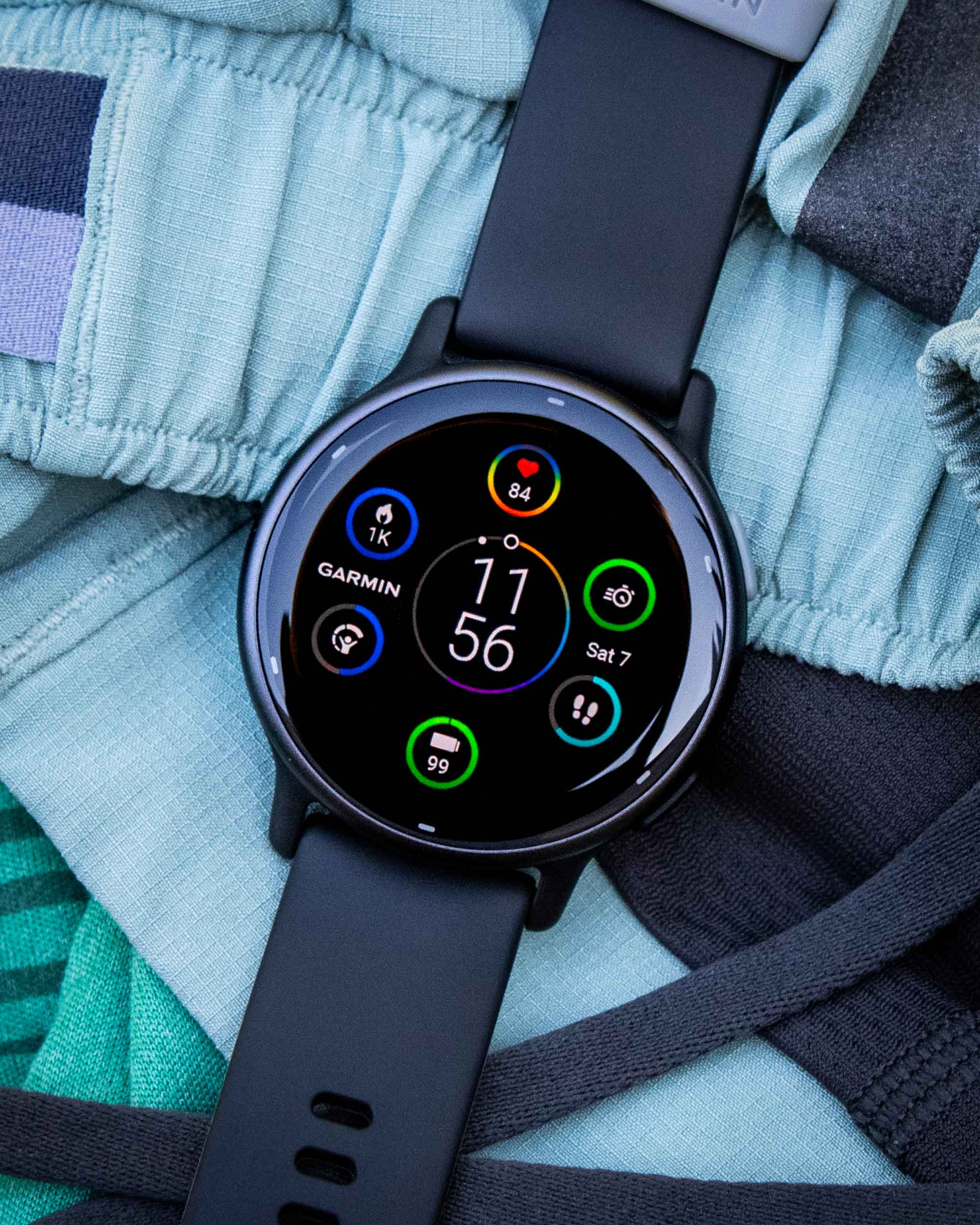
While the Vivoactive 5 isn’t Garmin’s most feature-packed smartwatch, it does have most of the features most people need, and it offers a pretty impressive feature list for only a little more than the brand’s least expensive model. With an official retail price of $299.99, the Garmin Vivoactive 5 is firmly positioned as the entry-level offering in the current lineup, but when it comes to actual design and features, the closest thing to the Vivoactive 5 is the more advanced Venu 3. The Venu 3 offers better features, but it’s 50% more expensive than the Vivoactive 5. Those who need extra features will certainly benefit from Garmin’s more advanced models, but the Vivoactive 5 will be more than enough for most people and sets the bar very high for an affordable, all-purpose smartwatch. For more information on the Garmin Vivoactive 5, visit the brand’s website.
